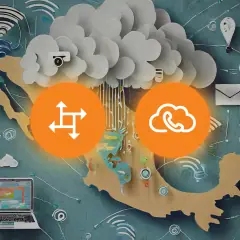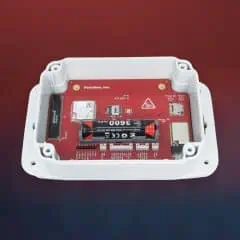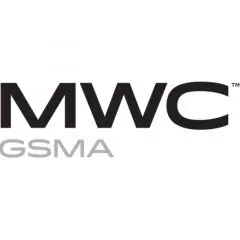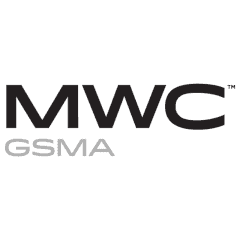Automated call wrap-up scheduling
Call center owners can now designate a “call wrap-up” period for their agents to give them time to focus on after-call tasks before receiving the next call.
Once an agent ends a call, a ”wrap-up” timer is automatically activated for them. During this designated time (e.g., 5 minutes), the agent will become unavailable for new incoming calls via the hunt group (also called ring group). This allows the agent to fully concentrate on wrapping up the previous call, including tasks such as updating client information, documenting call details, or scheduling follow-up actions.
What’s improved?
Sufficient time for call wrap-up
Agents are organized and fully prepared for each call.
Better customer experience
Callers have a more satisfactory and personalized experience.
Find more details here.
Prohibit the routing of calls with invalid CLI
In the telecom market, there is increasing importance on ensuring the validity of Calling Line Identification (CLI), which provides the called party with information about a caller. For instance, a valid CLI should be an E.164 phone number of a pre-determined length consisting of a valid country code, area or mobile network code, and line number. To compel service providers to deliver valid CLI numbers, vendors may refuse to process calls with a CLI that doesn’t meet the requirements, or they may apply significant surcharges for terminating such calls.
From MR108, you gain tighter control of routing calls with invalid CLI and can simply prevent such calls from going to a particular vendor (if it is known that the vendor applies surcharges or blocks such calls). Suppose some of your customers are using an invalid CLI due to misconfiguration – for example, their on-premise PBX sends an extension number such as “1356” as the CLI instead of an E.164 number such as “27134567890.” By prohibiting calls with invalid CLI, you can avoid vendor surcharges that might be associated with such customer calls.
What’s improved?
Avoid vendor surcharges
Remove the risk of costly termination charges for calls with an invalid CLI, avoiding revenue loss on customers with misconfigured CLI settings.
Find more details here.
Managing “role” availability to resellers
You can now choose which “roles” your resellers can assign to their customers and accounts for access to the self-care web interface.
Previously, when admins created a new role, e.g., “Cloud PBX” with full access to the CloudPBX Self-Care Portal, any reseller could assign this role to their customers, granting them access to the portal as well.
Now, admins can choose whether to make the newly created role available to specific resellers only or universally visible to all resellers. Resellers who are not directly given permission will not be able to use a role.
For backward compatibility, all existing customer and account roles will remain available to all resellers after the system update to MR108.
What’s improved?
Better control over access permissions
Ensure that resellers can only assign the roles they are authorized to use.
Easier administration for resellers
Resellers only see the roles that are relevant for them.
Find more details here.
“Aging” details in external invoice templates
You can now add details about the “aging” of outstanding amounts to an external invoice template. When customer invoices are generated, these invoices will display the aging intervals with corresponding outstanding amounts from previous invoices, if there are any.
The aging intervals are 0-30 days, 31-60 days, 61-90 days, 91-120 days, and 120+ days. These intervals represent the number of days that have passed since the generation of each invoice, along with the corresponding outstanding amounts for each period.
For example, say a customer named John subscribes to an Internet service in July and is charged $20 per month. He goes on vacation and doesn’t pay for his services for three months. In September, John receives an invoice with the total amount due of $60. The invoice includes aging details, showing him that:
- His $20 debt for September is up to 30 days old
- His $20 debt for August is up to 60 days old
- And his $20 debt for July is up to 90 days old
What’s improved?
Better customer experience
Enable customers to keep track of how much they owe and from what periods.
Easier administration
Easily supply transparent information on outstanding amounts from previous periods.
Find more details here.
Enable the generation of invoices and the export of xDRs independently
In the past, invoice generation was dependent on whether xDRs were saved to files. Now, the controls for invoice generation and xDR export to files have been separated. Invoices will be generated when an invoice template is assigned in the customer class settings, regardless of the option selected for xDR export.
For example, say you don’t need to store xDRs in files as you already export xDRs from PortaBilling into an external data warehouse. In this case, you may want PortaBilling to skip the xDR export to improve the system performance. Now, you can disable the xDR export while still being able to invoice your customers.
Note that, in most countries, there is a legal requirement for service providers to maintain call history records for a long time. Since xDRs are periodically cleaned up from the database, saving xDRs to files might be your only way to comply with local regulations. For that reason, disable xDR export to files only if you have some other means to store call history records.
What’s improved?
Better control over system resource usage
Enable or disable invoice generation and xDR export based on your specific requirements.
Find more details here.
Avoid unnecessary SSL certificate renewal when not using SIP over TLS
Enabling SIP over TLS requires the generation of SSL certificates in order to validate that the secure connection is established to the server that it claims to be. In order to simplify administration and prevent companies from having to obtain these certificates from outside authorities such as Verisign, PortaSwitch could generate self-sign certificates. However, if you do not use SIP over TLS, this could create occasional periods of unnecessary downtime when the system detected an approaching expiry date for the certificates and so restarted the SIP server during the next configuration update.
Now, PortaSwitch will recognize when you do not use SIP over TLS, and will not generate or renew such certificates, allowing you to avoid that downtime.
Better customer service
Avoid disruptions caused by unnecessary certificate renewal.
Find more details here.
Remembering last opened submenu per entity
Now, when an administrator is navigating between entities of a specific type, such as accounts, subscriptions, and more, they will be automatically directed to the last opened panel (submenu) for that entity type.
Say an admin needs to grant access to a new, in-house developed portal of each account for a customer called ABC Company. The admin opens the first account and navigates to Personal Information > General Information > Web self-care. In the final panel, they enter the account’s credentials. Now, the required panel (“Web self-care”) will open automatically each time the admin moves on to the next account. Previously, the admin would have to make a number of clicks to navigate to the same panel for each of the other accounts.
This feature is enabled by default; however, you can disable it at any time.
What’s improved?
Easier administration
Save clicks and gain immediate access to the relevant submenu within a specific entity.
Find more details here.


















